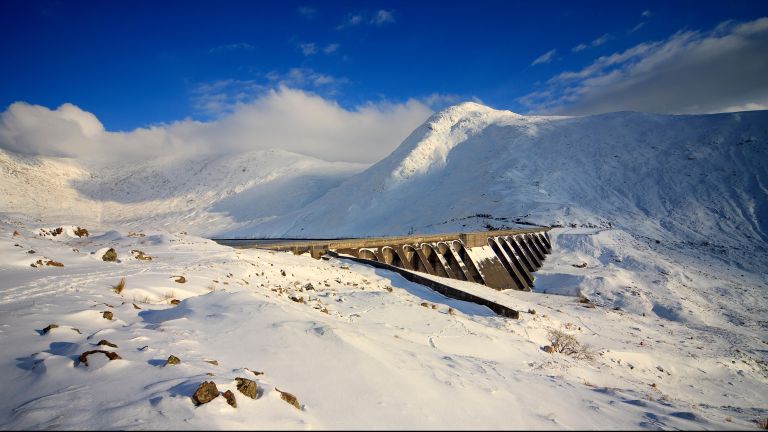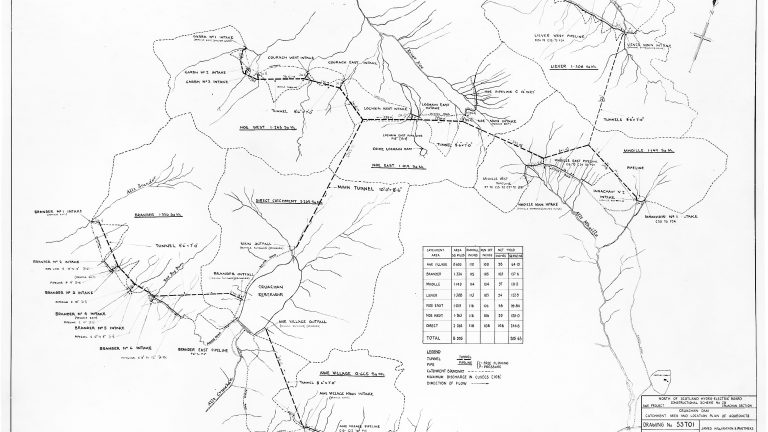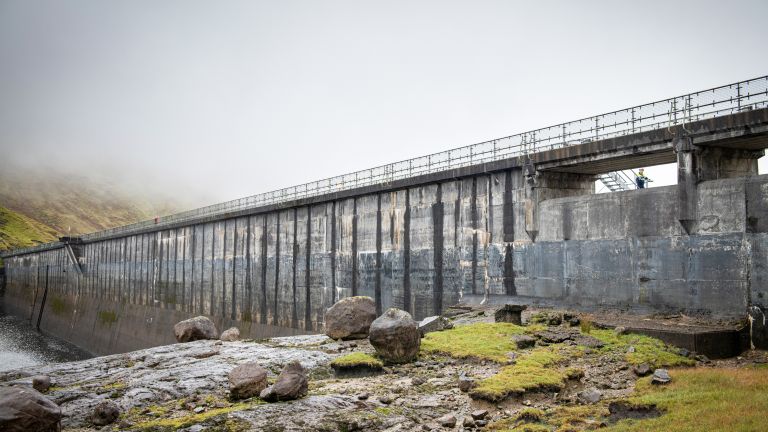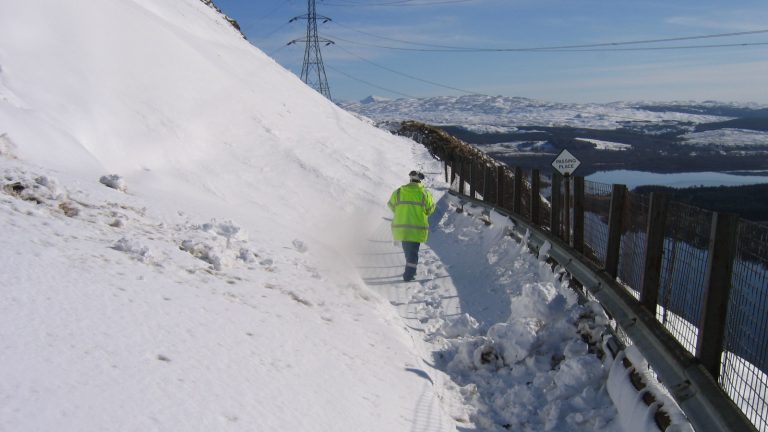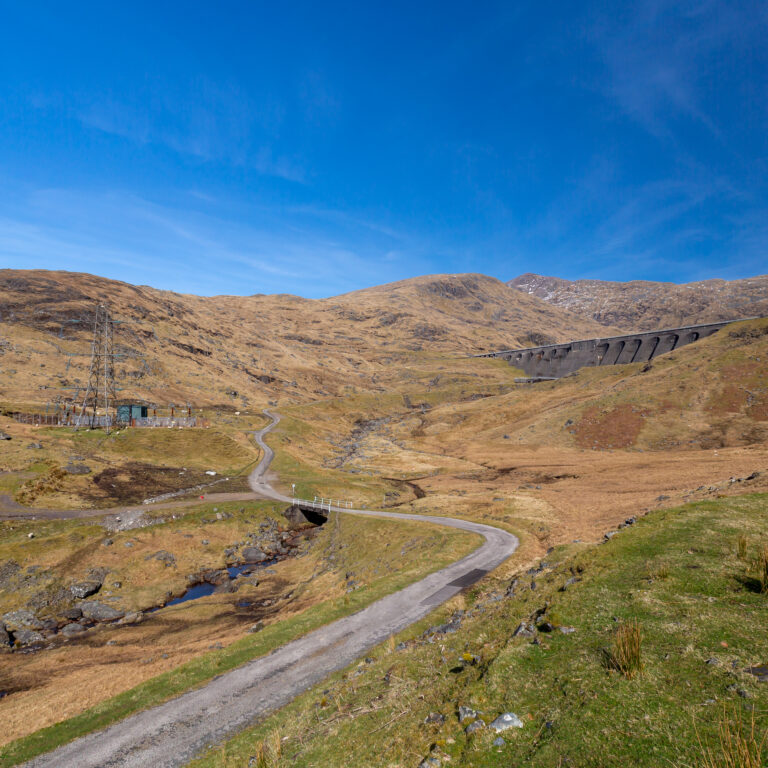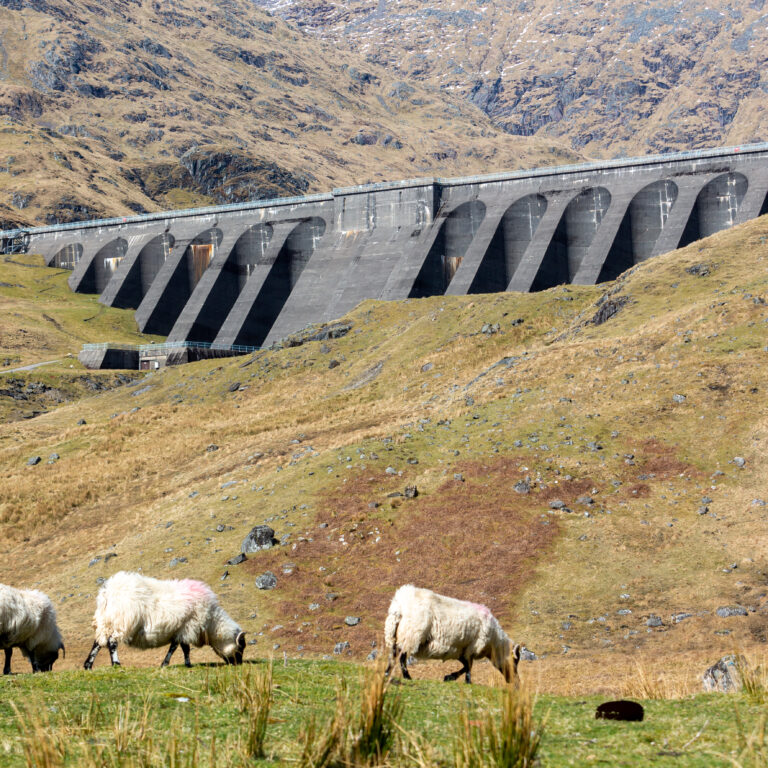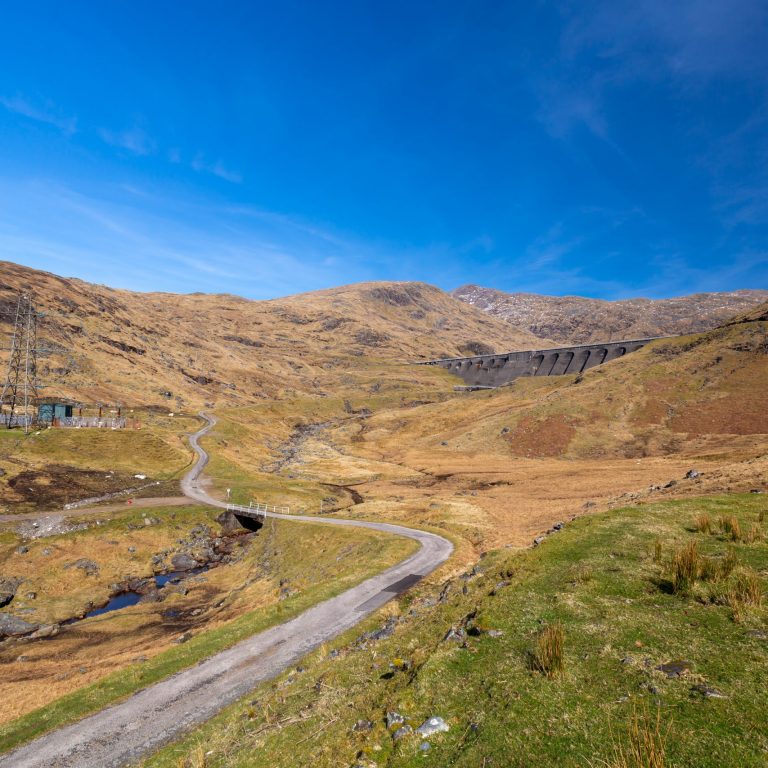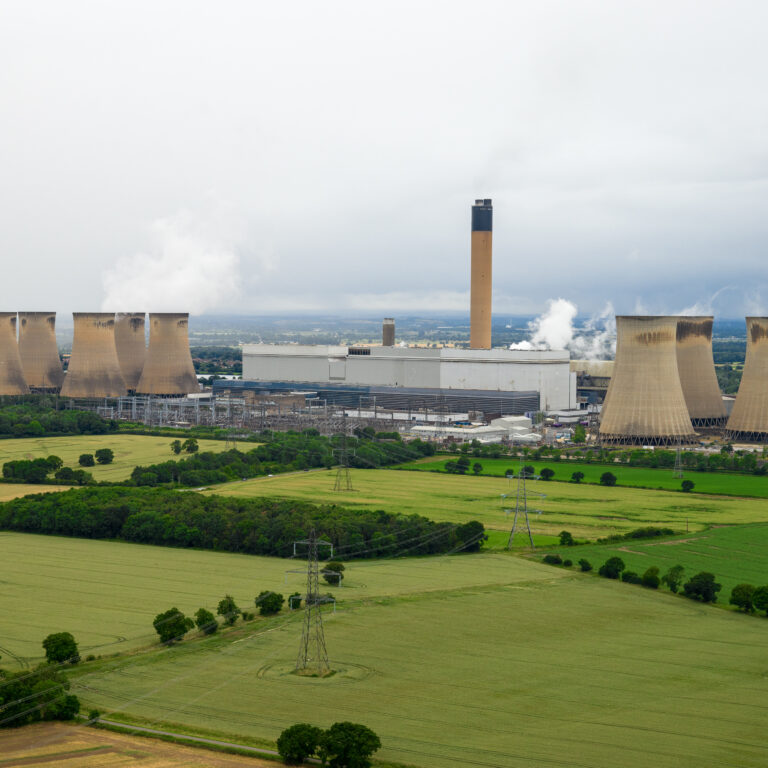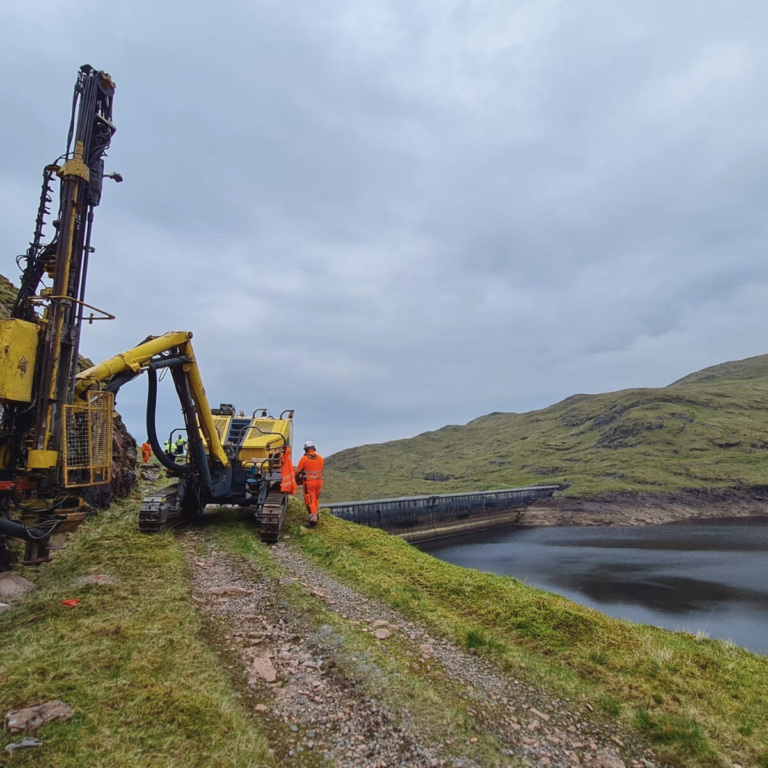Towering over Loch Awe, Ben Cruachan is one of many Munros that spend much of the winter blanketed in snow. Cruachan is unlike any other Scottish mountain, however. On its slopes lies a dam which stores water in a reservoir that is then transported into a power station built inside the hollowed-out centre of the mountain to generate power by spinning turbines.
“On a few occasions the snowfall has been so extreme that we’ve been unable to access the dam for a few weeks at a time,” says Gordon Pirie, a Civil Engineer at Cruachan. “Thankfully, we have enough controls in place where we are still able to monitor and operate things remotely.”
When there is excess power on grid, the turbines reverse and use it to pump water from Loch Awe up to the reservoir. In this way it is storing the excess electricity, in the form of water – like a battery – and holding it in the top reservoir, ready to be used by the power station when demand for power increases.
Built on the shores of Loch Awe in Argyll and Bute in the mid-1960s, Cruachan was the first reversible pumped storage hydro system on its scale to be built in the world and is still one of only four power stations in the whole of the UK that can operate in this way, making it a vital component of Britain’s generation network.
The power station is very responsive, and able to react quickly to changes on the system – it can achieve full load (440MW) in just 30 seconds and can operate continuously at full output for around 15 hours if necessary.
Thanks to Scotland’s wet weather, 70 million cubic metres of water flowed into Cruachan’s reservoir from surface water from the mountainside, melting snow and rainfall in 2018. That’s enough to fill 28,000 Olympic-sized swimming pools.
This water is collected and delivered through a complex series of aqueducts which stretch for some 14km and brings water from 75 intakes across the mountain. The intakes range from pipes no larger than small street drains to some large enough for a jeep to drive through.
Keeping these aqueducts in working order so melt water from snow can continue to flow into the reservoir is one of Pirie’s main tasks.
“Even in freezing conditions the water will still flow through the aqueduct system, the intakes have a built-in feature which allows the water to flow into them even if the surface is frozen solid,” he explains. “Any snow or frost on the ground eventually thaws and makes its way to the reservoir.”
Cruachan shows that with a bit of ingenuity and determination, Scotland’s dreich weather needn’t be a negative. The rain and snow which fall across the Highlands helps produce renewable electricity that powers our homes and moves us closer to a net-zero future.
The Hollow Mountain shows that every cloud really does have a silver lining.
Image captions (click to view/download)
Top image: A Highland cow with Ben Cruachan in the background.
- Cruachan dam and reservoir blanketed with snow. (Copyright Alamy all usage must be sought by them).
- Cruachan’s network of aqueducts stretch for around 14km.
- Civil engineer Gordon Pirie on Cruachan dam.
- Snow can block the access road to the dam, leading engineers to have to walk up the mountain.
ENDS
Media contacts:
Aidan Kerr
Drax Group Media Manager
aidan.kerr@drax.com
07849090368
Ali Lewis
Drax Group Head of Media & PR
ali.lewis@drax.com
07712 670 888
Editor’s Notes
- You can read about the men who built Cruachan and the complex construction of the power station on the Drax website.
- Drax acquired Cruachan power station at the end of 2018, when it bought a portfolio of flexible, renewable and low-carbon power stations located across Scotland and England.
- Since then, the visitor centre has been renovated and Drax has also introduced free school tours during term time as part of the company’s efforts to boost STEM (Science, Technology, Engineering and Maths) skills.
- 50,000 people visit Cruachan Power Station each year and take guided tours inside the subterranean world of the power station, where they can see the machine hall and learn about its history and the feat of engineering required to build it.
- Cruachan is one of four pumped hydro storage stations in the UK and has a capacity of 440 MW – enough to power more than 880,000 homes during peak demand.
- The turbine hall is located 1 km within the hollowed-out mountain of Ben Cruachan and houses four generators, supplying a range of vital balancing and ancillary services to the grid, such as frequency control, spinning and operating reserves, helping to maintain secure power supplies.
- Drax’s Scottish operations include hydro facilities in Galloway and Lanark and a biomass-from-waste plant at Daldowie, near Glasgow, along with Cruachan, all of which were acquired at the end of last year.
About Drax
Drax Group’s purpose is to enable a zero carbon, lower cost energy future. Its 2,900-strong employees operate across three principal areas of activity – electricity generation, electricity sales to business customers and compressed wood pellet production.
Power generation:
Drax owns and operates a portfolio of flexible, low carbon and renewable electricity generation assets across Britain. The assets include the UK’s largest power station, based at Selby, North Yorkshire, which supplies five percent of the country’s electricity needs.
Having converted two thirds of Drax Power Station to use sustainable biomass instead of coal it has become the UK’s biggest renewable power generator and the largest decarbonisation project in Europe.
Its pumped storage, hydro and energy from waste assets in Scotland include Cruachan Power Station – a flexible pumped storage facility within the hollowed-out mountain Ben Cruachan. It also owns and operates four gas power stations in England.
Customers:
Drax owns two B2B energy supply businesses:
- Haven Power, based in Ipswich, supplies electricity and energy services to large Industrial and Commercial sector businesses.
- Opus Energy, based in Oxford, Northampton and Cardiff, provides electricity, energy services and gas to small and medium sized (SME) businesses.
Pellet production:
Drax owns and operates three pellet mills in the US South which manufacture compressed wood pellets (biomass) produced from sustainably managed working forests. These pellet mills supply around 20% of the biomass used by Drax Power Station in North Yorkshire to generate flexible, renewable power for the UK’s homes and businesses.
For more information visit www.drax.com









